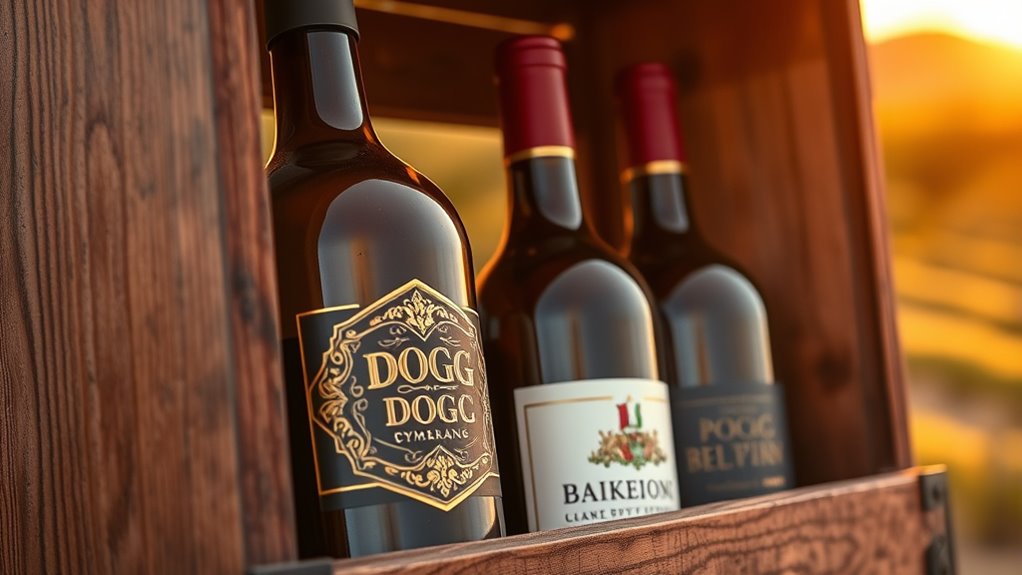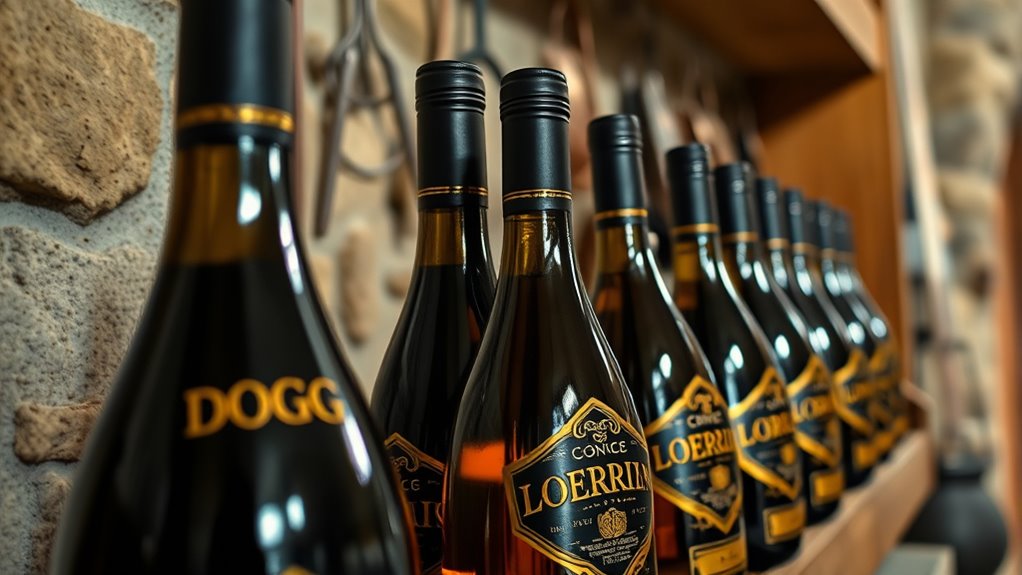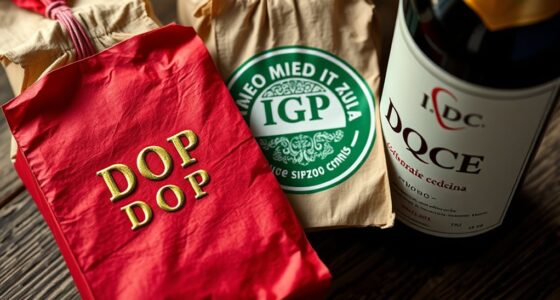The DOCG classification is Italy’s top wine designation, guaranteeing your wine meets strict quality, authenticity, and regional standards. It involves specific grape varieties, aging requirements, and rigorous controls from vineyard to bottle. This label assures you’re getting a genuine product rooted in tradition and craftsmanship. Knowing what DOCG means helps you appreciate Italy’s rich wine heritage and ensures a memorable tasting experience. Explore further, and you’ll uncover even more about what makes these wines exceptional.
Key Takeaways
- DOCG is Italy’s highest wine classification, guaranteeing origin, quality, and strict production standards.
- Specific grape varieties are mandated for each DOCG wine, reflecting regional traditions.
- Aging requirements ensure wines develop complexity and are ready for consumption.
- Certification involves rigorous controls over vineyard practices, production, and aging processes.
- Recognizing DOCG labels helps consumers appreciate Italy’s regional wine heritage and authenticity.

If you’re exploring Italian wines, understanding the DOCG classification is vital to appreciating their quality and authenticity. DOCG, or Denominazione di Origine Controllata e Garantita, represents the highest tier of Italian wine classification, guaranteeing that wines meet strict standards. One key aspect of these standards involves specific grape varieties that producers must use to craft their wines. These grape varieties are carefully selected and often limited to those traditionally associated with the region, guaranteeing that the wine reflects its terroir. For example, Barolo is made primarily from Nebbiolo grapes, while Brunello di Montalcino uses Sangiovese. Recognizing these permitted grape varieties helps you identify the wine’s expected characteristics, flavor profile, and origin. Additionally, interior design basics such as mood boards and narratives can serve as metaphors for understanding the structure and story behind each wine, enhancing your appreciation. Beyond the grape varieties, aging requirements play a vital role in the DOCG classification. These rules dictate how long a wine must be aged before it can be released to the market, which directly influences the wine’s complexity, balance, and overall quality. For instance, some DOCG wines, like Chianti Classico Riserva, must be aged for a minimum of two years, with additional aging periods for Riserva versions. Others, such as Amarone della Valpolicella, require a specific aging process that often exceeds several years, giving the wine a richer, more developed profile. These aging requirements are not arbitrary; they’re designed to guarantee that the wine reaches a certain level of maturity and refinement before it reaches consumers. As a wine enthusiast, paying attention to these aging stipulations allows you to better understand what to expect from a DOCG wine and when it’s at its peak.
The combination of strict grape variety regulations and mandated aging periods guarantees that DOCG wines maintain a high standard of quality and authenticity. When you see a DOCG label, it’s a sign that the wine has passed rigorous controls, from vineyard practices to production and aging. This certification offers you confidence in the wine’s origin and craftsmanship. Knowing about these classifications isn’t just about labels; it’s about deepening your appreciation of Italy’s diverse wine heritage. When you select a DOCG wine, you’re choosing a product that exemplifies regional identity, tradition, and expertise. By understanding the significance of grape varieties and aging requirements, you’re better equipped to enjoy and evaluate the nuanced flavors and qualities that make Italian DOCG wines truly exceptional.
Frequently Asked Questions
How Does DOCG Classification Affect Wine Pricing and Market Value?
Your wine’s DOCG classification substantially influences its pricing and market perception. When a wine earns DOCG status, it signals high quality and strict regulations, which often lead to higher pricing. Consumers view DOCG wines as premium, increasing market demand and value. This classification acts as a mark of authenticity, boosting your wine’s reputation and making it more attractive to buyers seeking top-tier Italian wines.
Are There Specific Regions With More DOCG Wines Than Others?
You’ll notice that some regions have a higher concentration of DOCG wines, reflecting their rich winemaking traditions. For example, Piedmont and Tuscany dominate with numerous DOCGs, showcasing their geographic diversity and expertise. In contrast, other regions may have fewer DOCG designations, focusing more on broader classifications. This regional concentration highlights Italy’s diverse terroirs and enhances your appreciation for the unique qualities each area offers.
Can DOCG Wines Be Produced Outside Designated Areas?
You might wonder if DOCG wines can be made outside designated regions. Generally, they can’t because of extraneous regulations that strictly define geographic boundaries. These rules ensure quality and authenticity, so producers must adhere to geographic flexibility within specific areas. If you’re exploring Italian wines, remember DOCG status confirms that the wine is produced within the established region, maintaining tradition, quality, and regional identity.
What Are the Common Misconceptions About DOCG Wines?
Did you know that many believe DOCG wines are always the best? That’s a myth busting misconception. You might assume they automatically guarantee top quality, but not all DOCG wines are equal. The common misconception is that DOCG status equals perfection, but quality depends on many factors. Don’t judge a wine solely by its label—explore beyond the myths to truly appreciate its unique characteristics.
How Do Aging Requirements Differ Among DOCG Wines?
You’ll notice that aging requirements vary among DOCG wines, affecting their flavor and complexity. Some wines need a specific aging duration before release, like Chianti Classico, which requires bottle aging to develop its character. Others, such as Barolo, demand longer aging durations both in barrel and bottle. By following these aging guidelines, you guarantee the wine reaches its peak quality and flavor profile, enhancing your tasting experience.
Conclusion
So, now that you’ve unraveled the fancy DOCG labels, you’re practically a wine expert—who knew those tiny distinctions could be so alluring? Just remember, while the labels promise prestige, a good bottle’s truly about what’s in your glass, not just the fancy name. So go ahead, impress your friends with your knowledge, but don’t forget: sometimes, the best wine’s the one that surprises you, regardless of its classification. Cheers to that!









